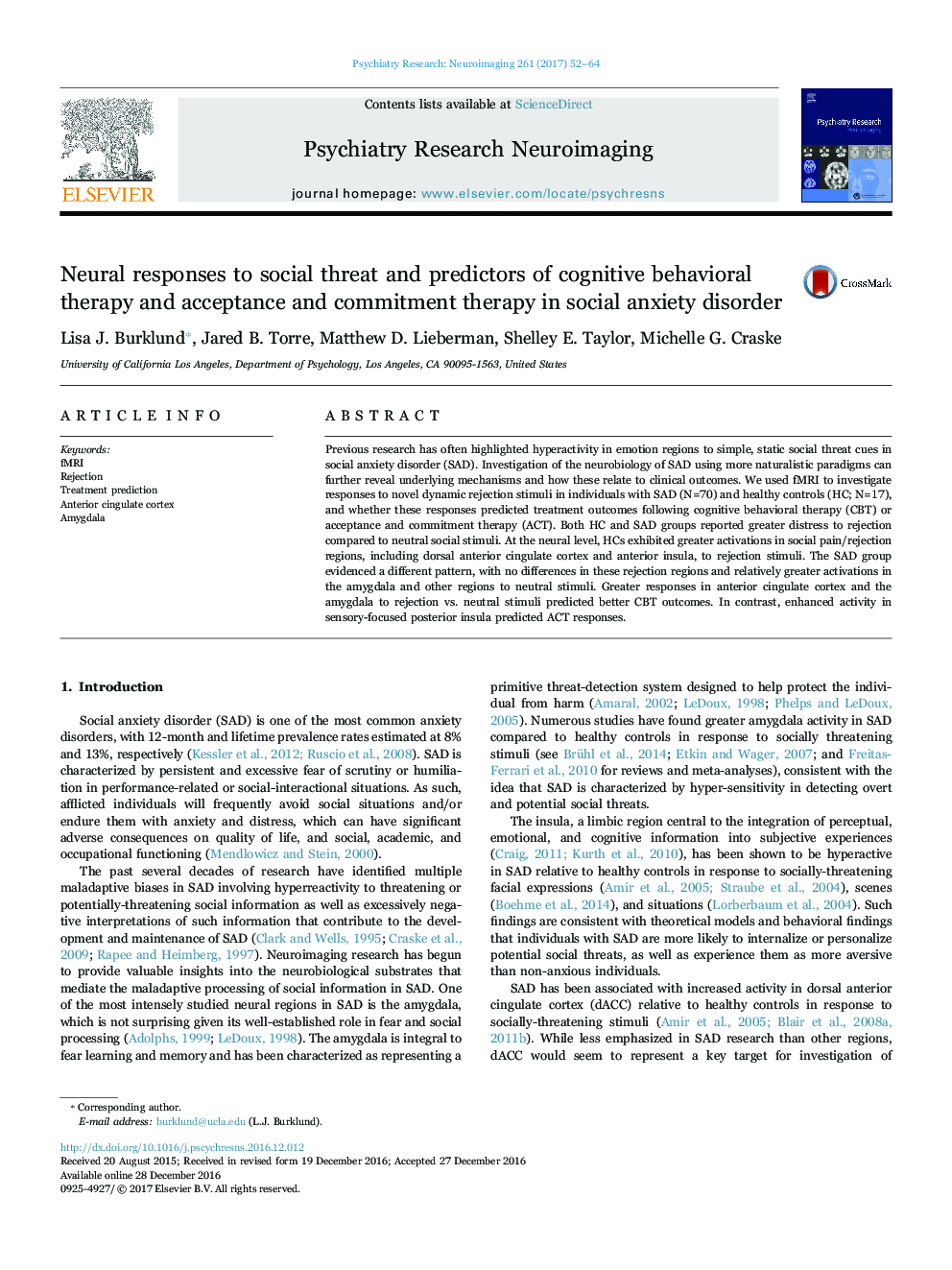| Article ID | Journal | Published Year | Pages | File Type |
|---|---|---|---|---|
| 4934007 | Psychiatry Research: Neuroimaging | 2017 | 13 Pages |
â¢Both control and SAD participants reported greater distress to novel dynamic social rejection stimuli vs. neutral stimuli.â¢Healthy controls showed expected activations in dACC and anterior insula to rejection stimuli vs. neutral.â¢SADs showed greater amygdala activity to neutral stimuli vs. rejection, but no significant group differences were seen.â¢Greater reactivity in ACC and amygdala to rejection stimuli was related to better CBT outcomes.â¢Greater neural reactivity in sensory-focused posterior insula related to success with ACT.
Previous research has often highlighted hyperactivity in emotion regions to simple, static social threat cues in social anxiety disorder (SAD). Investigation of the neurobiology of SAD using more naturalistic paradigms can further reveal underlying mechanisms and how these relate to clinical outcomes. We used fMRI to investigate responses to novel dynamic rejection stimuli in individuals with SAD (N=70) and healthy controls (HC; N=17), and whether these responses predicted treatment outcomes following cognitive behavioral therapy (CBT) or acceptance and commitment therapy (ACT). Both HC and SAD groups reported greater distress to rejection compared to neutral social stimuli. At the neural level, HCs exhibited greater activations in social pain/rejection regions, including dorsal anterior cingulate cortex and anterior insula, to rejection stimuli. The SAD group evidenced a different pattern, with no differences in these rejection regions and relatively greater activations in the amygdala and other regions to neutral stimuli. Greater responses in anterior cingulate cortex and the amygdala to rejection vs. neutral stimuli predicted better CBT outcomes. In contrast, enhanced activity in sensory-focused posterior insula predicted ACT responses.
